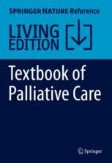Search
Search Results
-
Hydrogels for Musculoskeletal Tissue Engineering
The advancements in scaffold-supported cell therapy for musculoskeletal tissue engineering have been truly dramatic in the last couple of decades....
-
Regeneration of Articular Cartilage
Loss of articular cartilage from the ends of bones forming diarthrodial joints can be the source of profound pain and disability, and eventually lead...
-
Tissue Engineering Strategies for Bone Regeneration
Bone loss due to trauma or disease is an increasingly serious health problem. Current clinical treatments for critical-sized defects are problematic...
-
Polymeric Systems for Bioinspired Delivery of Angiogenic Molecules
Growth factors are increasingly utilized to promote regeneration of lost or compromised tissues and organs. However, current strategies applying...
-
Biopolyesters in Tissue Engineering Applications
Tissue engineering is a rapidly growing interdisciplinary field of research focused on the development of vital autologous tissue through the use...
-
Interfaces to Control Cell-Biomaterial Adhesive Interactions
Cell adhesion to adsorbed proteins and adhesive sequences engineered on surfaces is crucial to cellular and host responses to implanted devices,...
-
Simultaneous In Vivo Regeneration of Neodermis, Epidermis, and Basement Membrane
Full-thickness skin loss does not undergo complete spontaneous regeneration in mammals. To restore the normal function of skin, dermal and epidermal...
-
Heart Valve Regeneration
The valves of the heart cannot regenerate spontaneously. Therefore, heart valve disease generally necessitates surgical repair or replacement of the...
-
Regeneration of Urologic Tissues and Organs
Patients suffering from a variety of urologic diseases may be treated with transplanted tissues and organs. However, there is a shortage of donor...
-

-
Current Topics Regarding the Function of the Medial Temporal Lobe Memory System
The first clear insight that the medial temporal lobe of the human brain was in fact a system of anatomically connected structures that were...
-
Effects of Sex Steroids on Innate and Adaptive Immunity
Estrogens and androgens are classically recognized as reproductive sex steroid hormones because of their well-documented effects on reproductive...
-
Spinal Cord Regeneration
Repairing the damaged spinal cord has for a long time eluded neuroscientists. Few other achievements in neuroscience would have such a tremendous...
-
Self-Assembling Nanopeptides Become a New Type of Biomaterial
Combining physics, engineering, chemistry and biology, we can now design, synthesize and fabricate biological nano-materials at the molecular...
-
Modulating Extracellular Matrix at Interfaces of Polymeric Materials
As extracellular matrices (ECM) closely interact with cells in living tissues and, through this, influence essentially any aspect of life...
-
Peripheral Nerve Regeneration
The nerve chamber model has dominated the experimental study of peripheral nerve (PN) regeneration with animal models as well as in several clinical...
-
The Management of Neurological Symptoms in Palliative Care
Neurological disease is a major cause of disability and death across the world. There is increasing evidence that palliative care is effective in...
-
End of Life Care: Context, Goals, and Challenges
This chapter aims to tackle end of life issues for patients and their families. It will reflect on the process of disease to understand when “end of...
-
Accessing Palliative Care: Challenges and Opportunities
Access to palliative services is significant issue facing policymakers around the globe. Much of this discussion is centered on the important...
-
Advance Care Planning in Palliative Care
Advance care planning is a person-centered process to enable a person to express their preferences for future health care. Advance care planning is...
